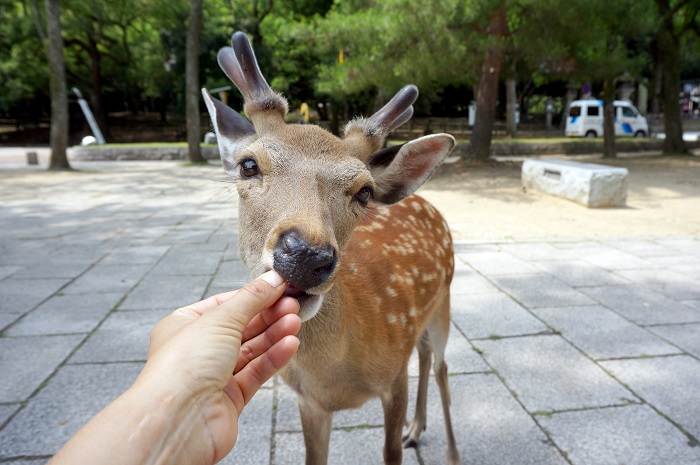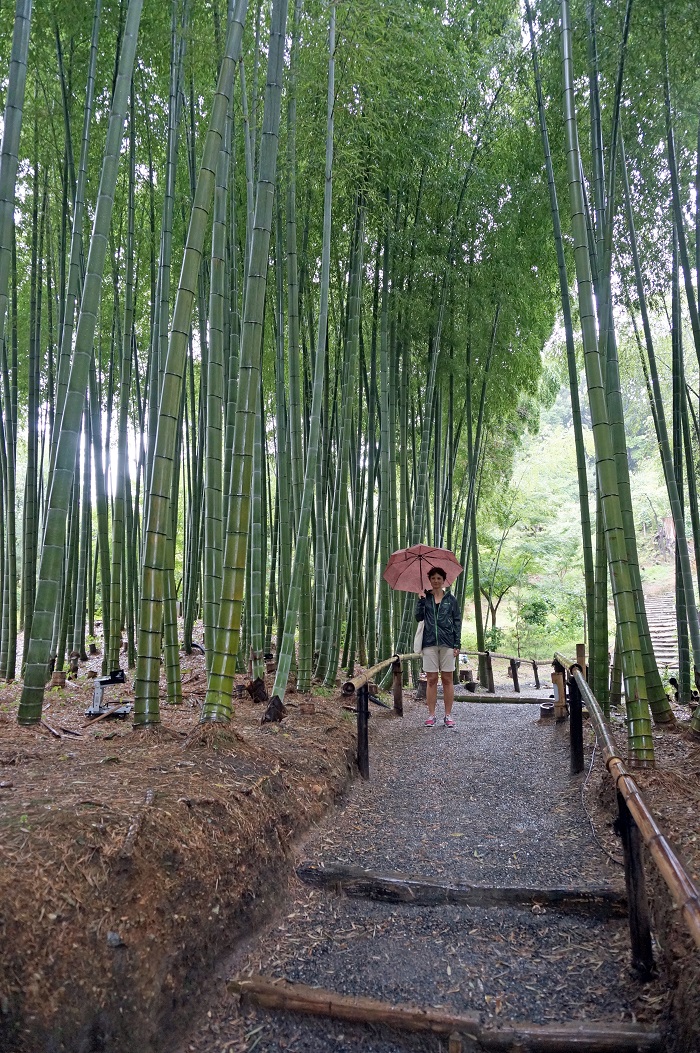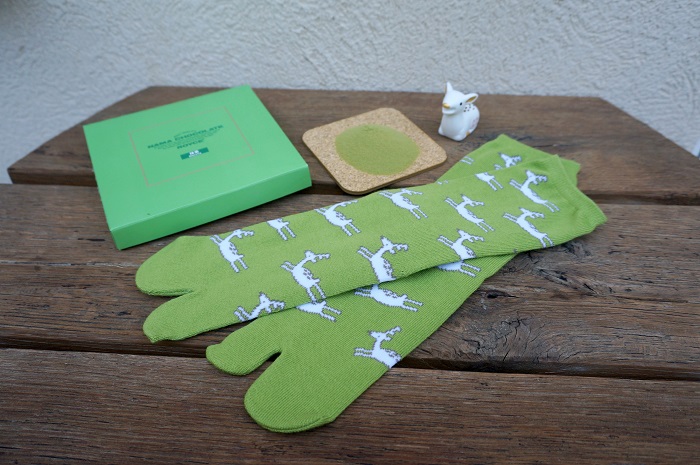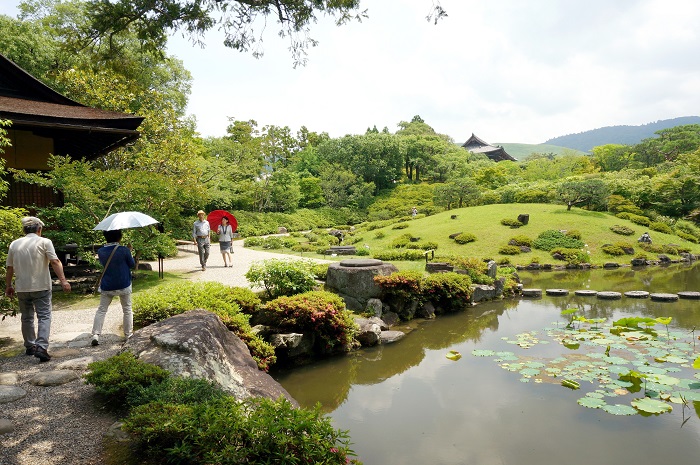If you are regularly reading this section of OutdoorUAE you probably remember, that I devoted last month to a magic beverage called coffee. But what if coffee does not agree with you and you are more of a tea drinker? This month we will explore the hidden secrets of green tea and matcha, the way I see them. I will share some tips about how to enhance its properties, so you can maximize its benefits. All that from the eye of the traveller (myself) who got to spend two days in one of my favourite countries – Japan. We will also look at some other extremely beneficial products Mother Nature offers to Japanese people and luckily to the rest of the world. We will explore secrets behind longevity and why is seaweed or umeboshi plum part of almost every Japanese meal.
If you are still undecided about where to head this summer, I strongly recommend you consider Japan. The Land of the Rising Sun offers anything from excellent hiking trails, mountain biking, exploring volcanoes, to the most fascinating cultures in the world.
I have been to Osaka before, and in order to run away from hustle and bustle of this metropolis, I decided to head to Nara on my first day. The story of holy deers who freely roam around this picturesque town was not to be missed. Courtesy goes a long way in Japan and you have to see to believe, that any deer will bow to say thank you and please in order to receive a deer cracker (available for sale anywhere in Nara). I was so taken by this scene, that I ended up spending a few hours playing and feeding them and only then decided to visit a few temples (absolutely stunning Kasuga-taisha Shrine and Todai-ji on the hill tops) and Isuien Zen gardens. But no matter where I went in Nara, I was followed by deers, little bambis or monstrous massive deers. Japanese zen gardens are truly magical places. Just few metres away from crowded tourist location, you are surrounded by serene, green land with lakes and little streams. Everything is immaculately trimmed, grounds swept, that you wouldn’t dare stepping anywhere outside the trail. I had an impression, that even the fish in the pond looked happy.

All this finished with traditional Japanese lunch of sticky rice, seaweed, umeboshi plums, potato soup, raw quail egg and of course some matcha tea with red bean biscuit. The cutest thing to me was, that while I was comfortably sitting on the floor with legs crossed looking into the stunning gardens, two elderly Japanese ladies came to present the food to me. One was carrying the food tray while the other one held a photo book explaining instruction how to prepare my food. Embarrassed having them kneeling down one on each side, all I was able to do was smile and say “thank you”several times. Not to mention the typical attention to detail, when my shoes were turned 180 degrees at the entry hall, so I could comfortably slip into them when leaving.
I guess not too many people like to hike in heat, so I was pretty much the only person on the top of Mount Wakakusayama with sweeping views across Nara.
I got to spend my second day in Kyoto with my husband. Heavy rain for most of the days certainly did not make us change plans. Coming from hot and humid Dubai, we very much enjoyed holding umbrellas and getting wet. Being more of an active person, my husband was not too keen on attending one of many tea ceremonies. When we mistakenly ended up on the wrong train and in Gion – an old part of Japan, he was left with no other choice.

Leaving the train station we were lucky enough to spot two real geishas walking towards us and 20 minutes later we were taking our shoes off and entering a 100-year-old formal geisha’s house to take part in a tea ceremony. The fascinating and religious preparation of the healthiest beverage in the world took 50 minutes. Harmony, respect, purity and tranquillity exercised during the process clearly justify matcha’s healing power.
We left the place feeling somehow more content and calm. We enjoyed numbers of temples hidden in the deep forest, admired all wonderful gardens and finished our day in Arashiyama bamboo forest. With lots of matcha in everything for the rest of the day, no wonder I felt wired for the next 24 hours!
Matcha
Green is my favourite colour. Understandably, I fell in love with everything from matcha tea, chocolates, cake, ice cream, soy matcha doughnuts and even green socks with a deer design I had purchased as a souvenir in Nara.
If you are not drinking matcha green tea yet, you are behind the times. But what is matcha actually? All tea comes from the same plant called Camellia sinensis. The plant can produce white, green, oolong, black or pu-erh tea depending on the region and processing method. Matcha is a high quality green tea that is covered before harvesting to accentuate the colour and increase chlorophyll content. It is then handpicked, steamed, dried and stone-ground into fine powder.
Matcha powder can be enjoyed simply by mixing it with almost boiling water. In Japan it is commonly used in sweets, cakes, ice creams and even chocolates. Check out the brand Royce! (They now sell them in Galleries Lafayette in Dubai Mall!)

Matcha is an antioxidant powerhouse. It delivers mega doses of catechins (unique in green tea) in every sip. Other beneficial ingredients are B vitamins (especially folate), manganese, magnesium and potassium.
Matcha green tea is considered the healthiest beverage on the planet. It can improve brain function and make you smarter, it increases fat burning, may lower the risks of various cancers, Type 2 Diabetes, cardiovascular diseases. Green tea can kill bacteria, which improves dental health and lowers the risk of infection. It is a longevity drink!
As you are ingesting the whole powdered leaf, a single serving of matcha is equivalent of 10 cups of green tea. While the caffeine content is lower, matcha is an ideal substitute for coffee. It delivers the pick-me-up effect without the jittery feeling or headache. Zen Buddhist monks drank matcha to remain alert and calm during long hours of meditation.
Tips
It might take some time for you to get used to matcha’s flavour. I recommend starting off with brewed green tea first. To boost its health benefits, add a squirt of lemon juice to your cup.Research has demonstrated that vitamin C significantly increases the absorption of catechins (more than five times). Try green tea with roasted rice, called genmaicha – definitely one of my favourites.

Have you tasted matcha frappucino or latte, a big trend these days? You might want to know, that proteins in milk may bind to and neutralise the powerful antioxidants, so the health benefits are substantially reduced. Not mentioning sugary syrups and artificial flavours coffee shops like to use.
I recommend buying organic matcha, because it is produced without any artificial fertilisers, herbicides or pesticides.
Besides green tea, there are two more things I am fascinated about: umeboshi plums and seaweed. You will find both of them in abundance in any supermarket, and there is a reason!
Umeboshi plums (considered medicinal plums) are created through lactic fermentation process using Japanese plums, shiso leaves and sea salt. They have highly alkalising properties able to restore digestive imbalances, fatigue, inflammation and even emotional imbalances. They are excellent treatment for upset stomach, vomiting, alcohol poisoning, diarrhoea and even runny nose.
The salty and sour properties make them an excellent accompaniment to rice dishes. Traditionally, Japanese put one of these plums in the centre of rice dishes to combat bacterial growth and also, to create a Japanese flag! One of my Japanese friends confessed, that despite him disliking plums, his mum would put ume plum in his rice in the lunch box every day. He swears the food never went off, even in heat.
Umeboshi plums are often enjoyed with green tea (often added right into it). They can also be used as salt substitute when cooking. Eating one plum on its own as the first thing in the morning stimulates digestion for a day.

Umeboshi plums are said to have been used by samurais to keep up their stamina, stave off fatigue, and help heal between battles.
If you are keen to try, you can buy them in selected Japanese stores in Dubai.
Seaweed
Is a superfood of acquired taste, it is part of almost every Japanese meal. It is an excellent source of vitamins A and C, iron, calcium, potassium, iodine and magnesium. Besides being considered a longevity food, seaweed is excellent for balancing blood sugar due to its soluble fibre content. Some of the most popular edible seaweeds are: nori, kombu, wakame, hijiki, arame and dulse. They should have a place in your kitchen, as they are highly alkalising foods. A piece of kombu added to one of the Japanese tetsubin teapots while boiling any beans or grains will result in minerals from seaweed absorbed by them. Grains and beans will become softer and taste better.
I had only 48 hours in Osaka to fit everything in, but surely even that ignited a fire inside me and I know I will return one day soon. Even though it feels somehow too far away, Emirates flies to Osaka daily.
Have a wonderful rest of summer everyone!
Words + Photos By: Ivana Chiles

